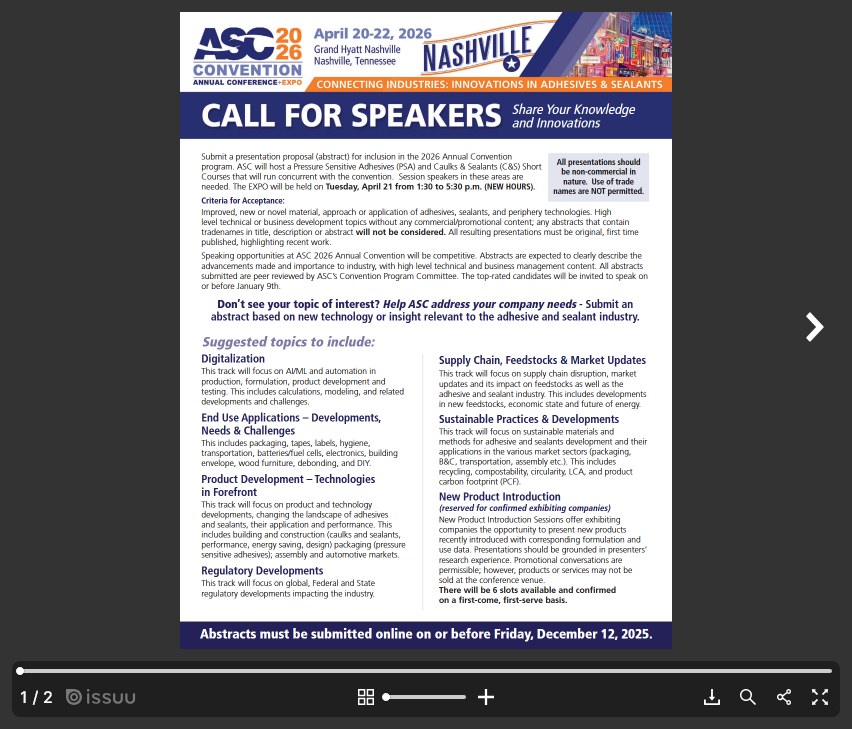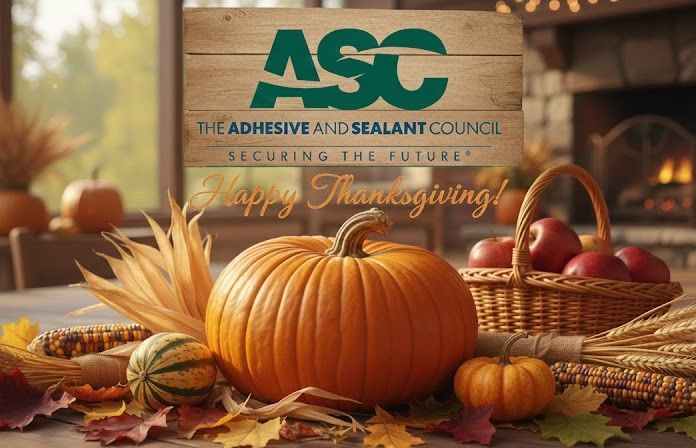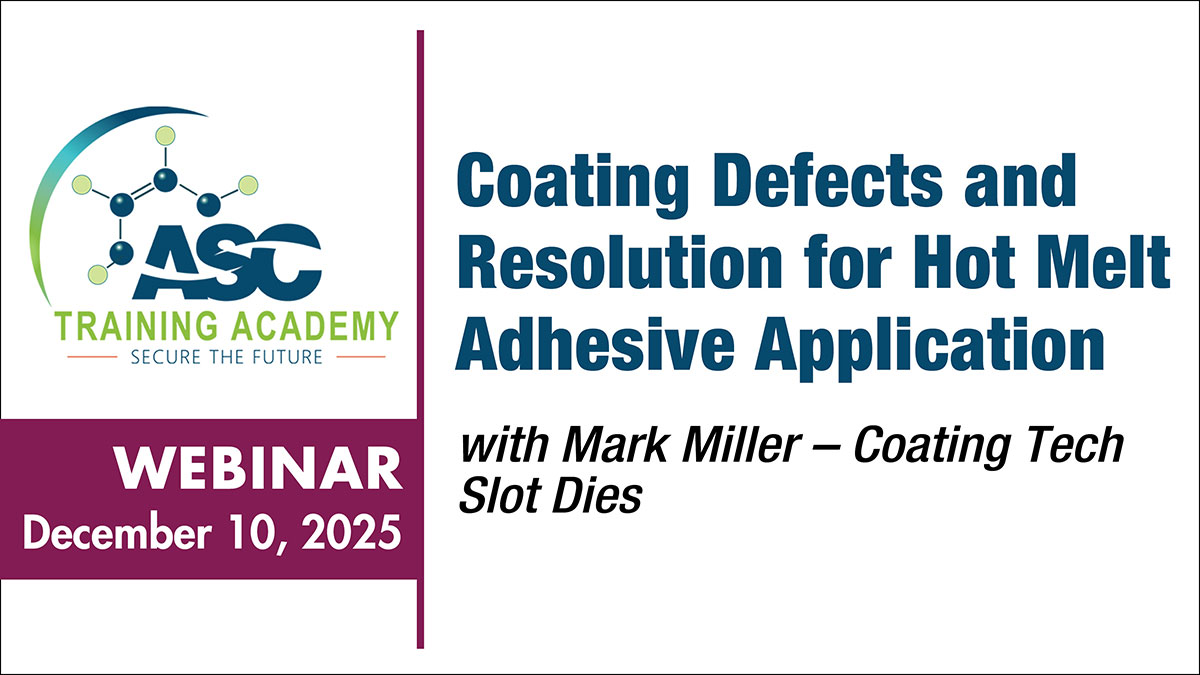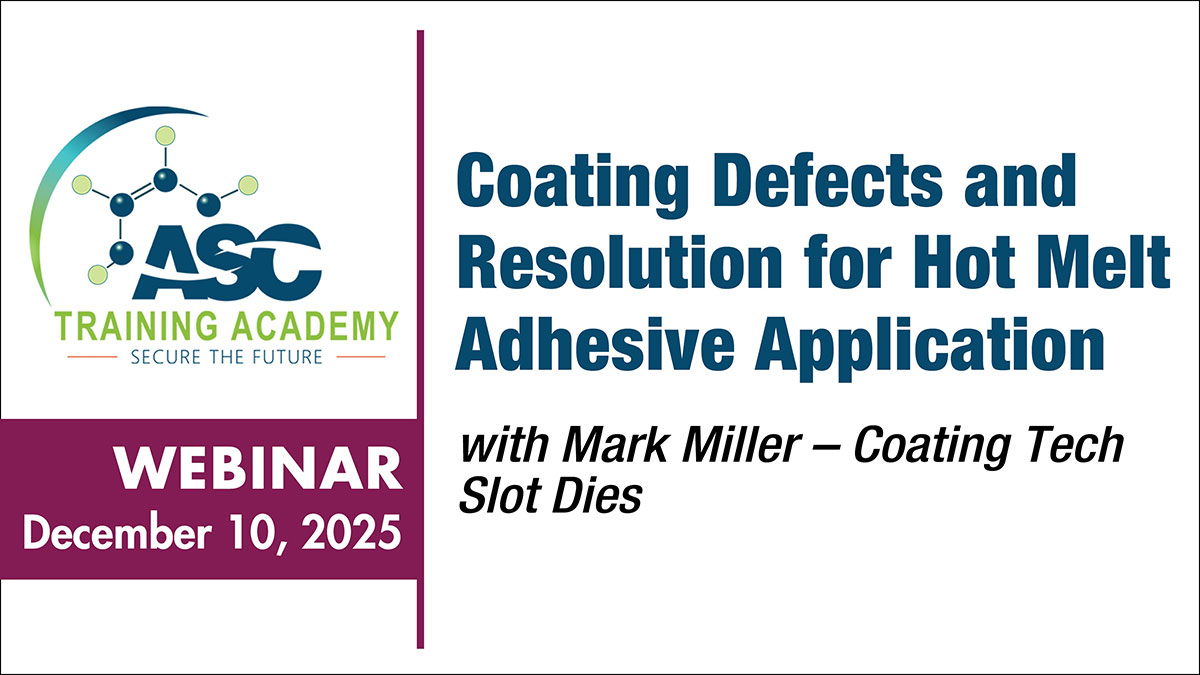Sealant Standard Test Methods
ASTM C510 -05a Standard Test Method for Staining and Color Change of Single- or Multicomponent Joint Sealants
This test method covers an accelerated laboratory procedure to determine if a sample of a joint sealant will stain the substrate when in contract with masonry, concrete, or stone (such as marble, limestone, sandstone, and granite). This test method also is intended to determine whether the sealant itself will change in color when exposed to the weather.
ASTM C603 -04(2008) Standard Test Method for Extrusion Rate and Application Life of Elastomeric Sealants
This test method covers two laboratory procedures for determining the extrusion rate and application life (or “pot life”) of elastomeric chemically curing sealants for use in building construction.
ASTM C639 -01(2007) Standard Test Method for Rheological (Flow) Properties of Elastomeric Sealants
This test method describes a laboratory procedure for the determination of rheological (flow) properties of single- and multicomponent chemically curing sealants for use in building construction.
ASTM C661 -06 Standard Test Method for Indentation Hardness of Elastomeric-Type Sealants by Means of a Durometer
This test method describes a laboratory procedure for determining indentation hardness of joint sealing compounds, (single- and multi-component), intended for use in building construction.
ASTM C679 -03 Standard Test Method for Tack-Free Time of Elastomeric Sealants
This test method covers a procedure for the determination of the tack-free time property of single- and multi-component elastomeric sealants commonly used for sealing, caulking, and glazing in buildings and related construction. This test method is applicable to self-leveling and non-sag grades of sealant. Sealants requiring slight heating to facilitate extrusion from the cartridge or gun are also described by this test method.
ASTM C681 -03 Standard Test Method for Volatility of Oil and Resin-Based, Knife-Grade Channel Glazing Compounds
This test method describes the determination of the volatility of oil- and resin-based, knife-grade, channel glazing compounds.
ASTM C711 -03 Standard Test Method for Low-Temperature Flexibility and Tenacity of One-Part, Elastomeric, Solvent-Release Type Sealants
This test method covers determination of the low-temperature flexibility and tenacity of one-part, elastomeric, solvent-release type sealants after cyclic high- and low-temperature aging.
ASTM C712 -03 Standard Test Method for Bubbling of One-Part, Elastomeric Solvent-Release Type Sealants
This test method covers determination of the degree of bubble formation or surface blistering in one-part, elastomeric solvent-release type sealants when exposed to elevated temperatures.
ASTM C719 -93(2005) Standard Test Method for Adhesion and Cohesion of Elastomeric Joint Sealants Under Cyclic Movement Hockman Cycle
This test method is an accelerated laboratory procedure for evaluating the performance of a building sealant in a test configuration that is subjected to water immersion, cyclic movement, and temperature change.
ASTM C731 -00(2006) Standard Test Method for Extrudability After Package Aging, of Latex Sealants
This test method covers a laboratory procedure for the determination of extrudability of latex sealants after freeze-thaw and heat cycling.
ASTM C732 -06 Standard Test Method for Aging Effects of Artificial Weathering on Latex Sealants
This test method covers a laboratory procedure for the determination of aging effects of artificial weathering on latex sealants.
ASTM C734 -06 Standard Test Method for Low-Temperature Flexibility of Latex Sealants After Artificial Weathering
This test method covers a laboratory procedure for the determination of low-temperature flexibility of latex sealants after 500 h artificial weathering.
ASTM C736 -00(2006)e1 Standard Test Method for Extension-Recovery and Adhesion of Latex Sealants
This test method covers a laboratory procedure for the determination of the extension-recovery and adhesion of latex sealants
ASTM C765 -97(2007) Standard Test Method for Low-Temperature Flexibility of Preformed Tape Sealants
This test method covers a laboratory procedure for testing the low-temperature flexibility of preformed tape sealants.
ASTM C771 -03 Standard Test Method for Weight Loss After Heat Aging of Preformed Sealing Tapes
This test method covers a laboratory procedure for determining the weight loss after heat aging of preformed tape sealants.
ASTM C772 -03 Standard Test Method for Oil Migration or Plasticizer Bleed-Out of Preformed Tape Sealants
This test method covers a laboratory procedure that can be used to determine the oil migration or plasticizer bleed-out of preformed tape sealants.
ASTM C782 -03 Standard Test Method for Softness of Preformed Tape Sealants
This test method describes a laboratory procedure for determining the softness of preformed tape sealants.
ASTM C792 -04(2008) Standard Test Method for Effects of Heat Aging on Weight Loss, Cracking and Chalking of Elastomeric Sealants
This test method covers a laboratory procedure for determining the effects of heat aging on weight loss, cracking, and chalking of cured-in-place elastomeric joint sealants (single- and multi-component) for use in building construction.
ASTM C793 -05 Standard Test Method for Effects of Laboratory Accelerated Weathering on Elastomeric Joint Sealants
This test method covers a laboratory procedure for determining the effects of accelerated weathering on cured-in-place elastomeric joint sealants (single- and multi-component) for use in building construction.
ASTM C794 -06 Standard Test Method for Adhesion-in-Peel of Elastomeric Joint Sealants
This test method covers a laboratory procedure for determining the strength and characteristics of the peel properties of a cured-in-place elastomeric joint sealant, single- or multi-component, for use in building construction.
ASTM C879 -03 Standard Test Methods for Release Papers Used With Preformed Tape Sealants
These test methods cover laboratory procedures for evaluating the release characteristics of a release paper intended to be supplied in direct contact with a preformed tape sealant.
ASTM C907 -03(2008) Standard Test Method for Tensile Adhesive Strength of Preformed Tape Sealants by Disk Method
This test method covers a laboratory procedure for determining the tensile adhesive strength of a preformed tape sealant. The type of failure can be determined, and the degree of cohesive/adhesive failure can be estimated.
ASTM C908 -00(2006) Standard Test Method for Yield Strength of Preformed Tape Sealants
This test method covers a laboratory procedure for determining the yield strength of preformed tape sealants.
ASTM C910 -06 Standard Test Method for Bond and Cohesion of One-Part Elastomeric Solvent Release-Type Sealants
This test method determines the bond and cohesion of one-part, elastomeric, solvent release-type sealants after high- and low-temperature aging.
ASTM C961 -06 Standard Test Method for Lap Shear Strength of Sealants
This test method covers a laboratory procedure for determining the lap shear strength of sealants. It also provides information on the adhesive bond of the sealants to the tested substrates.
ASTM C972 -00(2006) Standard Test Method for Compression-Recovery of Tape Sealant
This test method describes a laboratory procedure for determining compression-recovery characteristics of tape sealant.
ASTM C1016 -02(2008) Standard Test Method for Determination of Water Absorption of Sealant Backing
This test method covers a laboratory procedure for determining the water absorption characteristics of sealant backing and joint filler materials, hereinafter referred to as backing.
ASTM C1087 -00(2006) Standard Test Method for Determining Compatibility of Liquid-Applied Sealants with Accessories Used in Structural Glazing Systems
This test method covers a laboratory screening procedure for determining the compatibility of liquid-applied structural sealant glazing sealants when in contact with accessories such as dry glazing gaskets, spacers, shims, and setting blocks after exposure to heat and ultraviolet light. This test method includes the observation of three parameters as follows: Changes in the color of the sealant, Changes in the adhesion of the sealant to glass, and Changes in the adhesion of the sealant to the accessory being tested.
ASTM C1135 -00(2005) Standard Test Method for Determining Tensile Adhesion Properties of Structural Sealants
This test method covers a laboratory procedure for quantitatively measuring the tensile adhesion properties of structural sealants, hereinafter referred to as the "sealant".
ASTM C1183 -04(2008) Standard Test Method for Extrusion Rate of Elastomeric Sealants
This test method covers two laboratory procedures for determining the extrusion rate of elastomeric sealants for use in building construction.
ASTM C1216 -03(2008) Standard Test Method for Adhesion and Cohesion of One-Part Elastomeric Solvent Release Sealants
This test method is a laboratory procedure that determines the adhesion and cohesion performance of one-part elastomeric, solvent release sealants at high and low temperatures by the extension and compression of test specimens.
ASTM C1241 -00(2005) Standard Test Method for Volume Shrinkage of Latex Sealants During Cure
This test method covers a laboratory procedure for determining volume shrinkage, which occurs during cure, of a latex sealant.
ASTM C1246 -00(2006) Standard Test Method for Effects of Heat Aging on Weight Loss, Cracking and Chalking of Elastomeric Sealants After Cure
This test method covers a laboratory procedure for determining the effects of heat aging on weight loss, cracking and chalking of elastomeric joint sealants (single and multi-component) for use in building construction.
ASTM C1247 -98(2004) Standard Test Method for Durability of Sealants Exposed to Continuous Immersion in Liquids
This test method covers a laboratory procedure that assists in determining the durability of a sealant and its adhesion to a substrate while continuously immersed in a liquid. This test method tests the influence of a liquid on the sealant and its adhesion to a substrate. It does not test the added influence of constant stress from hydrostatic pressure that is often present with sealants used in submerged and below-grade applications, nor does it test the added influence of stress from joint movement while immersed. This test method also does not (in its standard form) test the added influence of acids or caustics or other materials that may be in the liquid, in many applications.
ASTM C1248 -08 Standard Test Method for Staining of Porous Substrate by Joint Sealants
This test method covers four types of laboratory tests to determine if a joint sealant has a probability of staining a porous substrate (such as marble, limestone, sandstone, and granite). The tests are on compressed samples and include (1) storage under standard laboratory conditions, (2) storage in an oven, and (3) exposure in a fluorescent UV/condensation device, and (4) exposure in a xenon arc device.
ASTM C1253 -93(2005) Standard Test Method for Determining the Outgassing Potential of Sealant Backing
This test method provides a procedure for determining the outgassing potential of a sealant backing when it is punctured during or after installation, with the puncture occurring before the sealant cures.
ASTM C1257 -06a Standard Test Method for Accelerated Weathering of Solvent-Release-Type Sealants
This test method includes two laboratory accelerated exposure procedures for predicting the effects of ultraviolet or ultraviolet/visible radiation, heat, and moisture on color, chalking, cracking, and adhesion of solvent-release sealants.
ASTM C1265 -94(2005)e1 Standard Test Method for Determining the Tensile Properties of an Insulating Glass Edge Seal for Structural Glazing Applications
This test method covers a laboratory procedure for quantitatively measuring the tensile strength, stiffness, and adhesion properties of insulating glass edge seals that are used in structural sealant glazing applications. Edge seals for these applications use a structural sealant to bond both glass lites and the edge spacer into a monolithic sealed insulating glass unit. In typical applications, the structural sealant acts to hold the outside lite in place under wind and gravity load and to maintain the edge spacer in its proper position. Hereafter, the term "insulating glass" will be abbreviated as "IG." The characterization of the IG secondary sealant properties, as defined by this test method, are strongly dependent on glass and edge spacer cleaning procedures, IG spacer profile, location of spacer, and primary IG sealant application. Users of this test method must recognize that the IG edge seal assembly influences the secondary sealant properties.
ASTM C1266 -02(2007) Standard Test Method for Flow Characteristics of Preformed Tape Sealants
This test method describes a laboratory procedure for determining the flow characteristics of preformed tape sealants after a specified time, temperature, and load.
ASTM C1294 -07 Standard Test Method for Compatibility of Insulating Glass Edge Sealants with Liquid-Applied Glazing Materials
This test method covers a laboratory procedure for quantitatively measuring the compatibility of liquid-applied glazing materials with an insulating glass unit edge sealant. Compatibility is determined by measuring the changes in the insulating glass edge sealant adhesive and cohesive properties. Hereinafter insulating glass is referred to as IG. This test method does not address the issue of the integrity of the hermetic seal or changes to the vision area in an IG unit. Such factors as possible unit fogging or primary sealant reaction in a dual-seal system due to volatile components permeating the IG sealant are not considered in this test method.
ASTM C1367 -06 Standard Test Method for Dead Load Resistance of a Sealant in Elevated Temperatures
This test method covers a laboratory procedure for determining the heat resistance of sealants. This test method is conducted under dead load in a shear mode. This test method was previously written to include only hot applied sealants.
ASTM C1382 -05 Test Method for Determining Tensile Adhesion Properties of Sealants When Used in Exterior Insulation and Finish Systems (EIFS) Joints
This test method describes a laboratory procedure for measuring tensile adhesion properties of sealants to exterior insulation and finish systems (EIFS) under dry, wet, frozen, heat-aged, and artificial weather-aged conditions.
ASTM C1501 -04 Standard Test Method for Color Stability of Building Construction Sealants as Determined by Laboratory Accelerated Weathering Procedures
This test method describes laboratory accelerated weathering procedures using either fluorescent ultraviolet or xenon arc test devices for determining the color stability of building construction sealants. Color stability rankings provided by these two procedures may not agree.
ASTM C1523 -04 Standard Test Method for Determining Modulus, Tear and Adhesion Properties of Precured Elastomeric Joint Sealants
This test method describes a laboratory procedure for measuring modulus, tear, joint movement ability and adhesion properties of applied, Precured Elastomeric Joint Sealants, hereinafter referred to as "applied seal" and if not applied, hereinafter referred to as "seal," on portland cement mortar as a standard substrate and or other substrates. It tests these properties after dry, wet, frozen, heat aged or artificially weather-aged conditionings, or both.
ASTM C1536 -03 Standard Test Method for Measuring the Yield for Aerosol Foam Sealants
This test method covers the determination of the linear units of specified diameter bead of foam sealant that can be obtained from a single can of aerosol product. Four (4) cans are required for each product determination. The method is intended to estimate the contents of the aerosol container (1) for purposes of label statements, and (2) to provide the user information needed to estimate job requirements. Such foam sealants are used for a variety of end use applications intended to reduce air movement in the building envelope. Currently two main foam sealant types are applicable to this standard, single component polyurethane and latex types.
ASTM C1635 -06 Standard Test Method to Evaluate Adhesion/Cohesion Properties of a Sealant at Fixed Extension
This test method describes a laboratory procedure for measuring the adhesion/cohesion properties of a sealant when subjected to tensile loads resulting from an applied specified strain. The adhesion/cohesion properties are evaluated before, during, and after water immersion. This test method examines the adhesive and cohesive performance of a sealant on a specified substrate at a strain equivalent to a multiple of the strain/movement capability designated by the manufacturer for the given sealant per Specification C 920.
ASTM C1643 -08 Standard Test Method to Measuring the Post Dispensing Volumetric Expansion of Aerosol Foam Sealants
This test method measures the volumetric expansion of aerosol foam sealants after dispensing. This test method provides a means for estimating the quantity of initial material required to dispense in order to fill a cavity. Aerosol foam sealants are used for a variety of applications intended to reduce airflow through the building envelope. This test method applies to two types of single component aerosol foam sealants: polyurethane and latex.
ASTM D2202 -00(2006) Standard Test Method for Slump of Sealants
This test method covers a laboratory procedure for the determination of the degree of slump of a sealant when used in a vertical joint in a structure.
ASTM D2203 -01(2007) Standard Test Method for Staining from Sealants
This test method covers a laboratory procedure for determining whether a sample of sealant will cause staining of the substrate when in the contact with masonry, concrete, or stone (marble, limestone, sandstone, granite, etc.).
ASTM D2377 -00(2008) Standard Test Method for Tack-Free Time of Caulking Compounds and Sealants
This test method describes the determination of the tack-free time property of caulking compounds and sealants. This test method is applicable to both gun and knife grades.
ASTM D2452 -03 Standard Test Method for Extrudability of Oil- and Resin-Base Caulking Compounds
This test method describes the laboratory procedure for determining the rate of extrusion of oil- and resin-base caulking compounds.
ASTM D2453 -03 Standard Test Method for Shrinkage and Tenacity of Oil- and Resin-Base Caulking Compounds
This test method describes a laboratory procedure for determining the shrinkage of oil- and resin-base (Note) caulking compounds, as well as the evaluation of the tenacity property of such compounds. This test method is applicable to both gun (Type I) and knife (Type II) grades. Note 1 - This is not a suitable test method for water-base products.
ASTM C834 -05 Standard Specification for Latex Sealants
This specification covers one component latex sealants used for sealing joints in building construction.
ASTM C920 -05 Standard Specification for Elastomeric Joint Sealants
This specification covers the properties of a cured single- or multicomponent cold-applied elastomeric joint sealant for sealing, caulking, or glazing operations on buildings, plazas, and decks for vehicular or pedestrian use, and types of construction other than highway and airfield pavements and bridges.
ASTM C1184 -05 Standard Specification for Structural Silicone Sealants
This specification describes the properties of cold liquid applied, single-component or multi-component, chemically curing elastomeric structural silicone sealants herein referred to as the sealant. These sealants are intended to structurally adhere components of structural sealant glazing systems. Only those properties for which there are industry-agreed-upon minimum acceptable requirements, as determined by available ASTM test methods, are described in this specification. Additional properties may be added as ASTM test methods for those properties become available.
ASTM C1281 -03 Standard Specification for Preformed Tape Sealants for Glazing Applications
This specification describes preformed tape sealants for use in glazing applications. These materials are generally used to serve as components of glazing systems. They are intended to serve as a water and air barrier. This specification is not intended for preformed foam tape sealants.
ASTM C1311 -02 Standard Specification for Solvent Release Sealants
This specification describes the properties of a one-component solvent release sealant for use in building construction. These sealants are generally formulated to withstand a maximum joint movement of 7.5 % in extension and 7.5 % in compression of the nominal joint width.
ASTM C1330 -02(2007) Standard Specification for Cylindrical Sealant Backing for Use with Cold Liquid-Applied Sealants
This specification covers the basic requirements for cylindrical sealant backing to be used with cold liquid applied sealants for use in building seals. Cylindrical sealant backing serves one or more of the following functions: Limits the amount and depth of sealant applied into a joint; acts as a bond breaker to allow joint movement without undue stress to the sealant; provides a form to assist the sealant in developing the proper shape factor; and acts as a barrier to the flow of sealant through the joint.
ASTM C1369 -07 Standard Specification for Secondary Edge Sealants for Structurally Glazed Insulating Glass Units
This specification describes the properties of cold, liquid-applied, single or multi-component, chemically curing, elastomeric sealants used as the secondary seal of sealed insulating glass units, hereinafter referred to as the "sealant" (see Fig. 1). These sealants are intended to be a structural component of sealed insulating glass (IG) units used in structural sealant glazing (hereinafter referred to as SSG). Typical designs and considerations can be found in Guide C 1249. Presently only certain silicone sealants are recognized as having the necessary durability for use as secondary sealant in IG units in SSG applications
ASTM C1518 -04 Standard Specification for Pre-cured Elastomeric Silicone Joint Sealants
Pre-cured elastomeric silicone joint sealants, hereinafter referred to as seal, are manufactured in flat, cured, extruded shapes and are primarily used to span joint openings in construction. This specification describes the properties of applied, flat shaped pre-cured elastomeric silicone joint sealants, hereinafter referred to as applied seal, that bridge joint openings and are adhered to joint substrates utilizing a liquid applied silicone adhesive sealant, specified by the manufacturer, hereinafter referred to as adhesive to construction substrates, to seal building openings such as panel joints, metal flashing joints, or other building openings in place of conventional liquid applied sealants. Seals are applied in three different configurations: A bridge joint, a beveled bridge joint, and a U-joint.
ASTM C1620 -05 Standard Specification for Aerosol Polyurethane and Aerosol Latex Foam Sealants
This specification covers the types, grades, and physical properties of aerosol polyurethane and aerosol latex foams extruded from pressurized containers and intended for building envelope air barrier sealant applications in building construction. For specific aerosol foam sealant applications, operational temperature limit criteria shall be as agreed upon between the aerosol sealant manufacturer and the purchaser.
ASTM C919 -08 Standard Practice for Use of Sealants in Acoustical Applications
This practice is a guide for the use of sealants to reduce the sound transmission characteristics of interior walls, ceilings, and floors by proper application of sealants to joints, voids, and penetrations normally found in building construction.
ASTM C1193 – 05a Standard Guide for Use of Joint Sealants
This guide provides information and guidelines for consideration by the designer or applicator of a joint seal. It explains the properties and functions of various materials, such as sealant, sealant backing, and primer, among others; and, procedures such as, substrate cleaning and priming, and installation of the components of a sealed joint. It presents guidelines for the use and application of the various materials, design of a sealant joint for a specific application, and environmental conditions and effects that are known to detrimentally affect a sealant joint. The information and guidelines are also useful for those that supply accessories to the sealant industry and for those that install sealants and accessory materials associated with sealant use.
ASTM C1249 – 06a Standard Guide for Secondary Seal for Sealed Insulating Glass Unites for Structural Sealant Glazing Applications
This guide covers design and fabrication considerations for the edge seal of conventionally sealed insulating glass units, herein referred to as IG units. The IG units described are used in structural silicone sealant glazing systems, herein referred to as SSG systems. SSG systems typically are either two or four sided, glazed with a structural sealant. Other conditions such as one, three, five, six sided may be used.
ASTM C1299 -03 Standard Guide for Use in Selection of Liquid-Applied Sealants
This guide covers general background information of the comparative evaluation and selection of liquid-applied sealants for use in building construction.
ASTM C1375 -00(2005) Standard Guide for Substrates Used in Testing Building Seals and Sealants
This guide describes the recommended standard substrates and their recommended surface preparation for use in standard tests of building seals and sealants.
ASTM C1392 -00(2005) Standard Guide for Evaluating Failure of Structural Sealant Glazing
This guide covers a screening approach to detect failure (adhesive or cohesive) of a structural sealant in a structural sealant-glazed window, curtain wall, or other similar system. Presently, only a silicone-sealant that is specifically formulated, tested, and marketed as a structural glazing sealant is allowed for structural sealant glazing.
ASTM C1394 – 03 (2008) Standard Guide for In-Situ Structural Silicone Glazing Evaluation
It is recommended to periodically evaluate the existing condition of structural sealant glazing (hereinafter called SSG) installations in situ to detect problems before they become severe or pervasive. Evaluation of existing SSG installations are required by certain building codes and local ordinances. This guide provides a program to evaluate the existing conditions, lists typical conditions, which might be found, and suggests times when such evaluations are appropriate. The committee with jurisdiction over this standard is not aware of any comparable standards published by any other organizations.
ASTM C1401 – 07 Standard Guide for Structural Sealant Glazing
Structural sealant glazing, hereinafter referred to as SSG, is an application where a sealant not only can function as a barrier against the passage of air and water through a building envelope, but also primarily provides structural support and attachment of glazing or other components to a window, curtain wall, or other framing system. This guide provides information useful to design professionals, manufacturers, contractors, and others for the design and installation of a SSG system. This information is applicable only to this glazing method when used for a building wall that is not more than 15° from vertical; however, limited information is included concerning a sloped SSG application. Only a silicone chemically curing sealant specifically formulated, tested, and marketed for structural sealant glazing is acceptable for a SSG system application.
ASTM C1442 -06 Standard Practice for Conducting Tests on Sealants Using Artificial Weathering Apparatus
This practice covers three types of laboratory weathering exposure procedures for evaluating the effect of actinic radiation, heat, and moisture on sealants. The exposure sources used in the three types of artificial weathering devices are the filtered xenon arc, fluorescent ultraviolet lamps, and open flame carbon arc based on Practices G 155, G 154, and G 152, respectively.
ASTM C1472 -06 Standard Guide for Calculating Movement and Other Effects When Establishing Sealant Joint Width
This guide provides information on performance factors such as movement, construction tolerances, and other effects that should be accounted for to properly establish sealant joint size. It also provides procedures to assist in calculating and determining the required width of a sealant joint enabling it to respond properly to those movements and effects. Information in this guide is primarily applicable to single- and multi-component, cold-applied joint sealants and secondarily to pre-cured sealant extrusions when used with properly prepared joint openings and substrate surfaces.
ASTM C1481 -00(2006) Standard Guide for Use of Joint Sealants with Exterior Insulation and Finish Systems EIFS
This guide describes the use of single and multi-component, cold-applied joint sealants, or pre-cured sealant systems for joint sealing applications, or both, in buildings using exterior insulation and finish systems (EIFS) on one or both sides of the joint. Refer to for joint seal geometries. The elastomeric sealants described by this guide meet the requirements of Specifications C 834, C 920, or C 1311.
ASTM C1487 -02(2007) Standard Guide for Remedying Structural Silicone Glazing
This guide provides recommendations for remedying existing structural sealant glazing (hereinafter called SSG) installations in situ. Remedial work may be necessary when a lite of glass is replaced, for routine maintenance, or after distress is discovered. This guide focuses on large-scale remedies.
ASTM C1519 – 04 Standard Practice for Evaluating Durability of Building Construction Sealants by Laboratory Accelerated Weathering Procedures
This practice covers the method for the determination of the durability of a sealant based on its ability to function in cyclic movement maintaining adhesion and cohesion after repeated exposure to laboratory accelerated weathering procedures. This practice describes two laboratory accelerated weathering procedures for evaluating the durability of a sealant.
ASTM C1520 -02 Standard Guide for Paintability of Latex Sealants
This guide describes the practical considerations that may be used to determine the compatibility of a paint or coating to be applied over a latex sealant or caulk. It evaluates the appearance and not the performance characteristics of the coated or painted joint.
ASTM C1521 -08 Standard Practice for Evaluating Adhesion of Installed Weatherproofing Sealant Joints
This practice describes field tests to determine the adhesive and cohesive characteristics of an installed sealant joint, by manually placing a strain on the sealant. The sealant to be tested shall be fully cured. The results of this method can be used in conjunction with other information to determine the overall performance of the sealant joint. The user of this practice should define the other parameters to be evaluated such as cleaning of the substrate, depth control of the sealant, sealant profile, etc. This method describes both nondestructive and destructive procedures. The destructive procedure stresses the sealant in such a way as to cause either cohesive or adhesive failure of the sealant or cohesive failure of the substrate where deficient substrate conditions exist. The objective is to characterize the adhesive/cohesive performance of the sealant on the specific substrate by applying whatever strain is necessary to effect failure of the sealant bead. It is possible that the strain applied to the sealant bead may result in the failure of a deficient substrate before effecting a failure in the sealant.
ASTM C1564 -04 Standard Guide for Use of Silicone Sealants for Protective Glazing Systems
This guide covers the use of silicone sealants in protective glazing systems for building construction. Protective glazing includes systems designed for use in applications subject to natural disasters such as hurricanes, earthquakes, windstorms and forms of forced entry such as blasts, burglary, and ballistic attack. While other glazing accessories and components are used in protective glazing, this document specifically describes the use of silicone sealants for protective glazing systems. This guide provides information useful to design professionals, architects, manufacturers, installers, and others for the design and installation of silicone sealants for protective glazing systems.




















